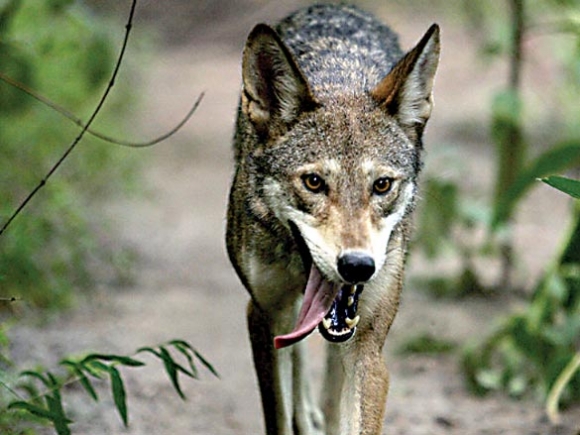A real can of DNA worms

A new whole-genome (the entire genetic makeup) study published in Science Advances on July 27 is giving the already muddied waters of wolf-coyote ancestry another stir.
The study, authored by Bridgett M. vanHoldt of Princeton, James A. Cahill of the University of California, Zhenxin Fan of Sichuan University, People’s Republic of China, Robert Wayne of the University of California and others suggests that the red wolf (Canis rufus) contains approximately 75 percent coyote genes and only 25 percent wolf, and that the eastern gray wolf (Canis lupus lycaon) shows 25 to 50 percent coyote ancestry.
The report is quite detailed both in its scientific regimen and its extrapolations (you can read the study here, http://advances.sciencemag.org/content/2/7/e1501714.full). The researchers believe that the gradient of coyote-wolf admixture neatly parallels the timetable of gray wolf extirpation across the Southeast, East and Great Lakes regions. Extensive habitat decimation across the Southeast as woodlands were converted to agriculture plus bounties on wolves beginning in the 1880s led to a quick and nearly complete demise of the wolf across the region.
That in turn would have allowed coyotes to expand into the area, increasing the odds coyote-wolf cross breeding. The same scenario played out in the Great Lakes region but at a later date (early 20th century) and a bit slower, which dovetails nicely with the coyote DNA percentage being greater in the Southeast — red wolf population — than in the northeast and/or Great Lakes — eastern gray wolf population.
The study provides an interesting look into the evolutionary biology of North American canids, but the impetus for the study is linked to a “real time” dilemma. The U.S. Fish and Wildlife Service (FWS) is charged with executing and/or administrating the Endangered Species Act (ESA.) One of the reasons for keeping the gray wolf on the ESA was the idea that the gray wolf, Canis lupus, once roamed across the Great Lakes Region and the eastern U.S. and that by allowing for ESA protections the FWS could reestablish the gray wolf in these areas. But the newly recognized eastern wolf has led the FWS to lobby for delisting the gray wolf across its current geographic range. This would leave quite a conundrum, as the ESA in its current form does not provide for protection of hybrids like the eastern wolf leaving its blight up in the air. And on the other hand the red wolf was one of the first animals listed by the ESA despite its admixture with coyotes.
The study suggests that the strict application of taxonomy to support endangered species status is antiquated and they encourage an “ecological authenticity” concept. In such a concept, admixed (hybrid) animals that have the same or similar ecological function as the native endangered specimen are deserving of protection.
Related Items
This interesting dilemma popped up on my radar screen last Sunday in the form of a “Bayou-Diversity” blog from Kelby Ouchley. Ouchley, Louisianan, natural history author and writer/narrator of Bayou-Diversity a public radio natural history program, worked as a biologist and refuge manager for FWS for 30 years and continues to promote conservation ethics and education through his writings and speaking engagements.
I tried on Aug. 1 to get some feedback from NWS and Defenders of Wildlife — an environmental group seeking continued protections for wolves in North America but I didn’t hear back in time for this article.
I will follow up and, hopefully have more insight into this dilemma by time for the next installment of The Naturalist’s Corner.
(Don Hendershot is a writer and naturalist. He can be reached a This email address is being protected from spambots. You need JavaScript enabled to view it..)









